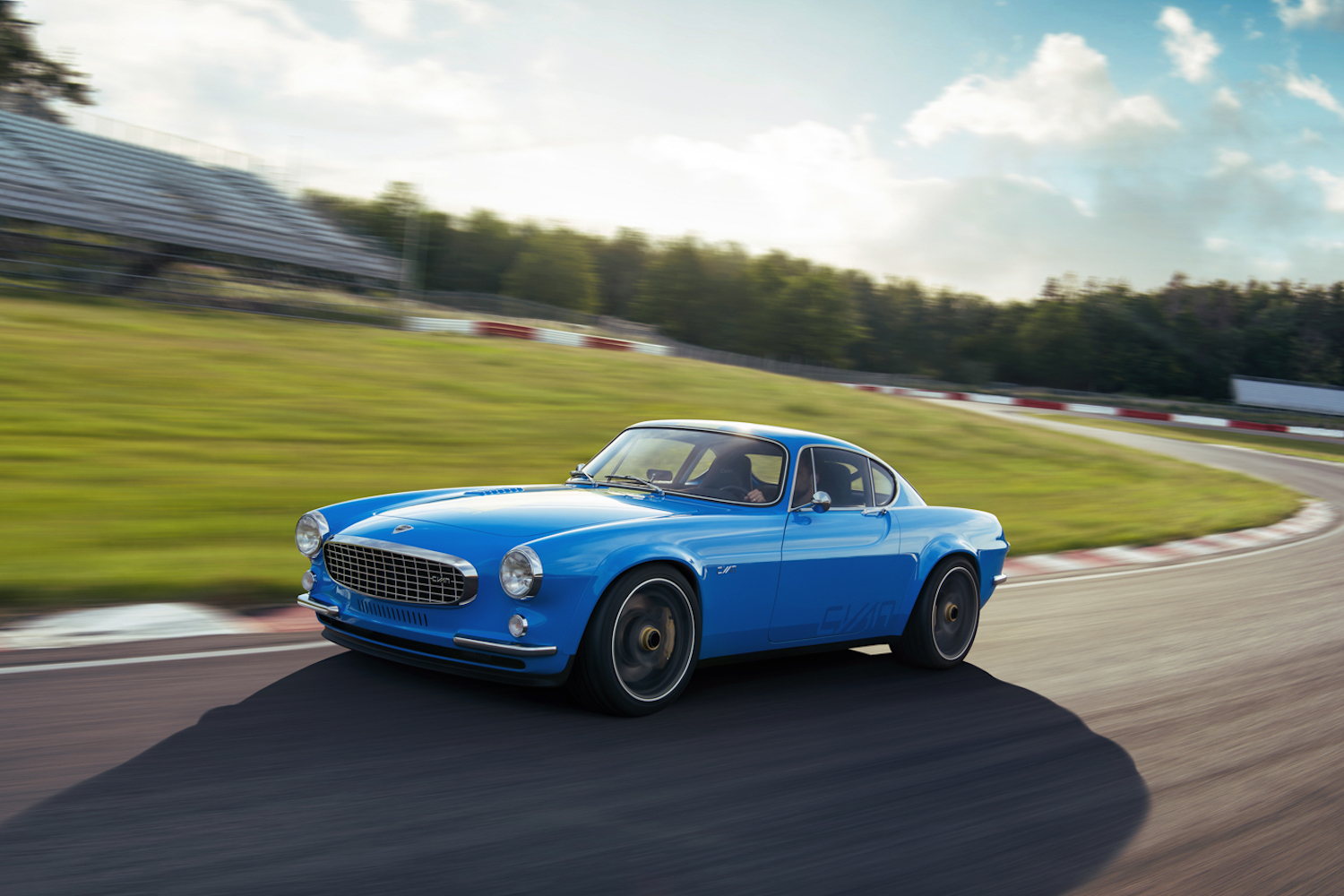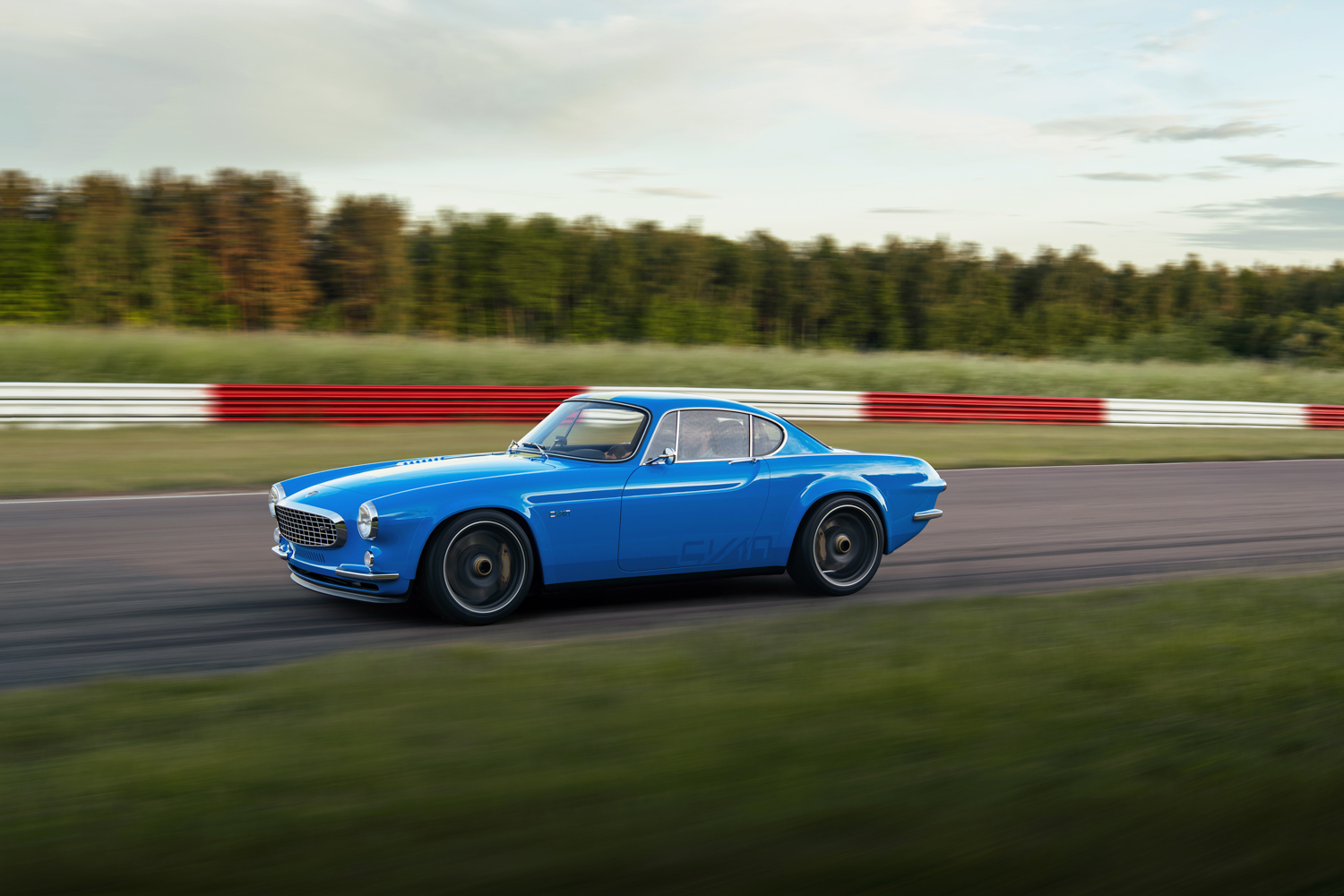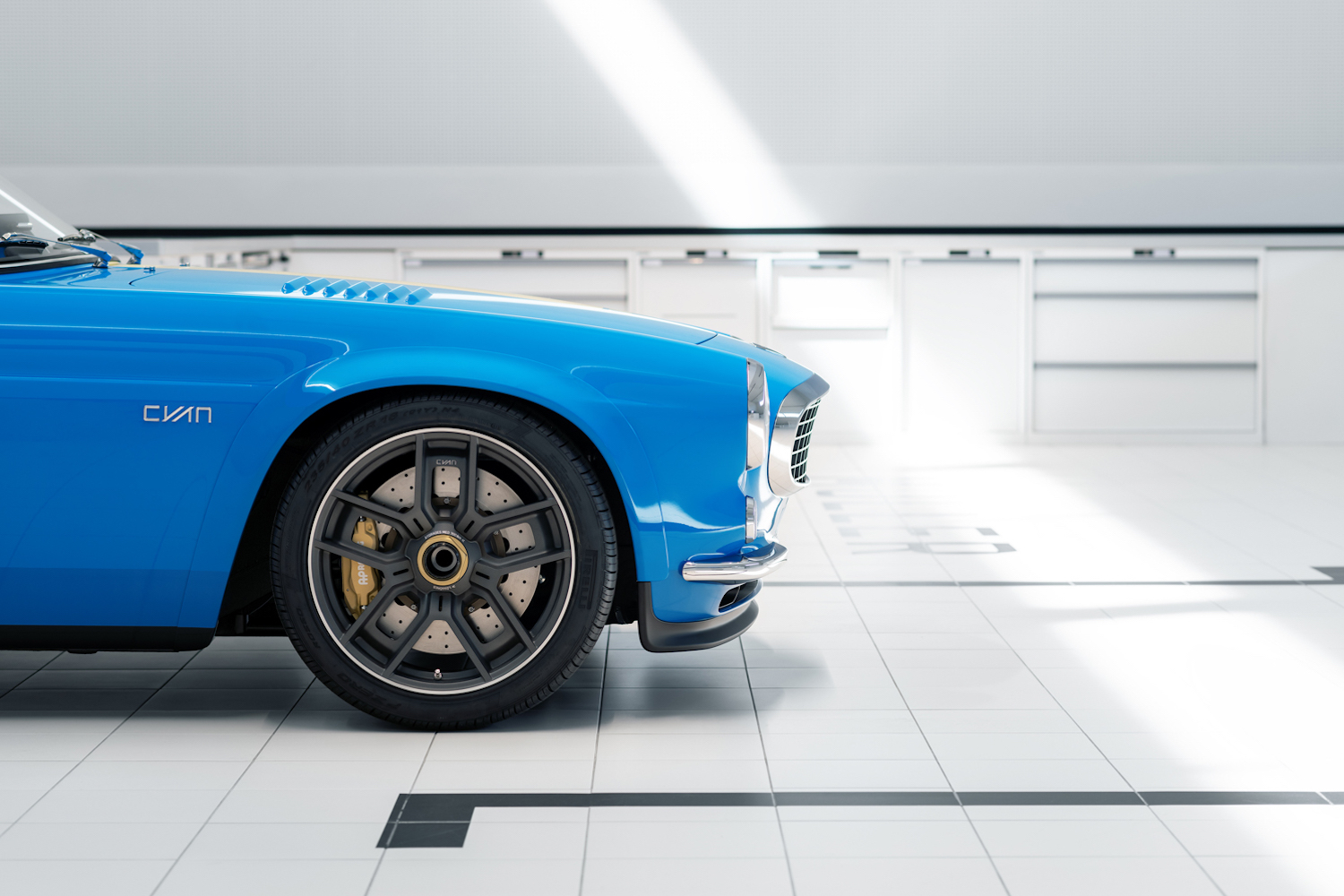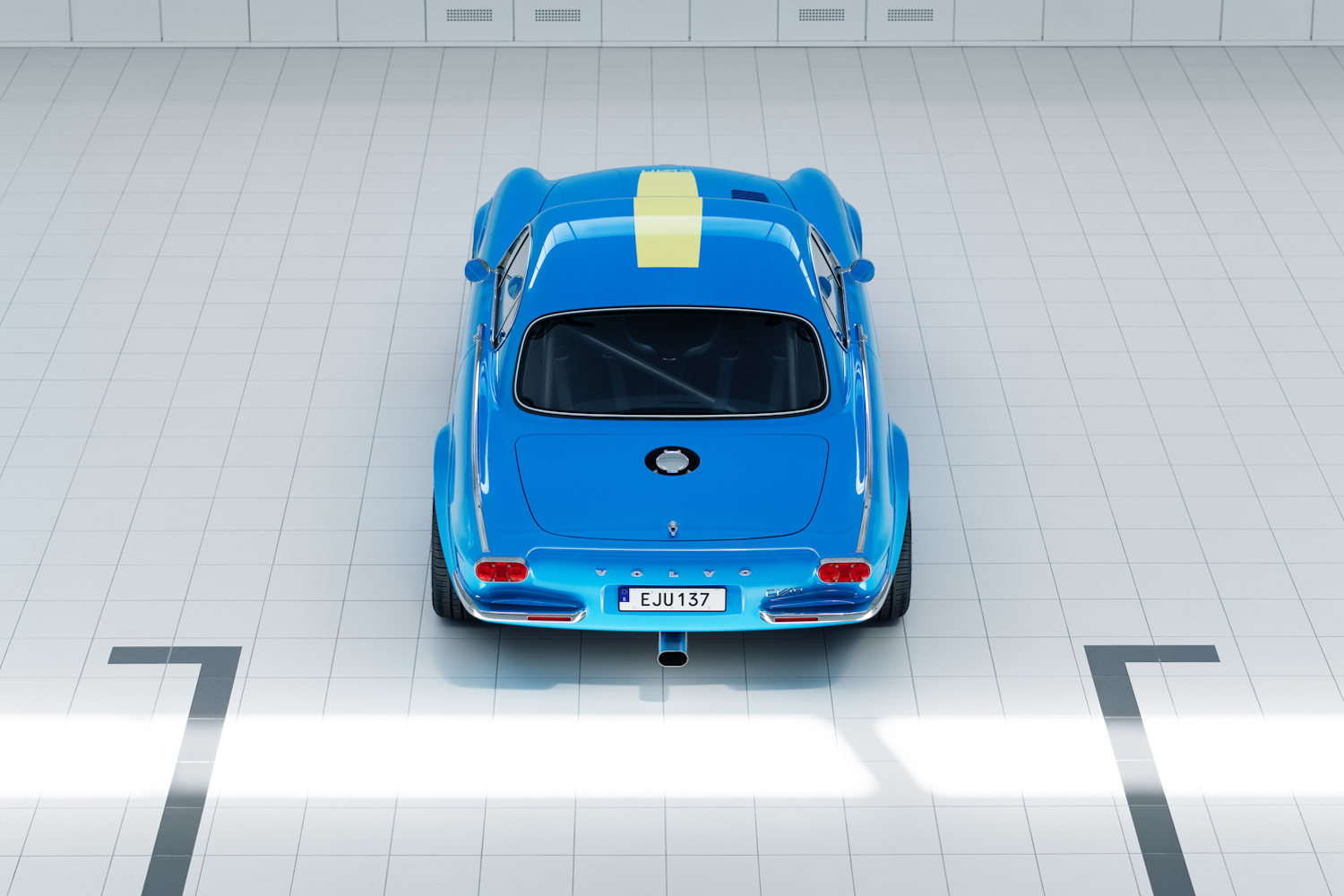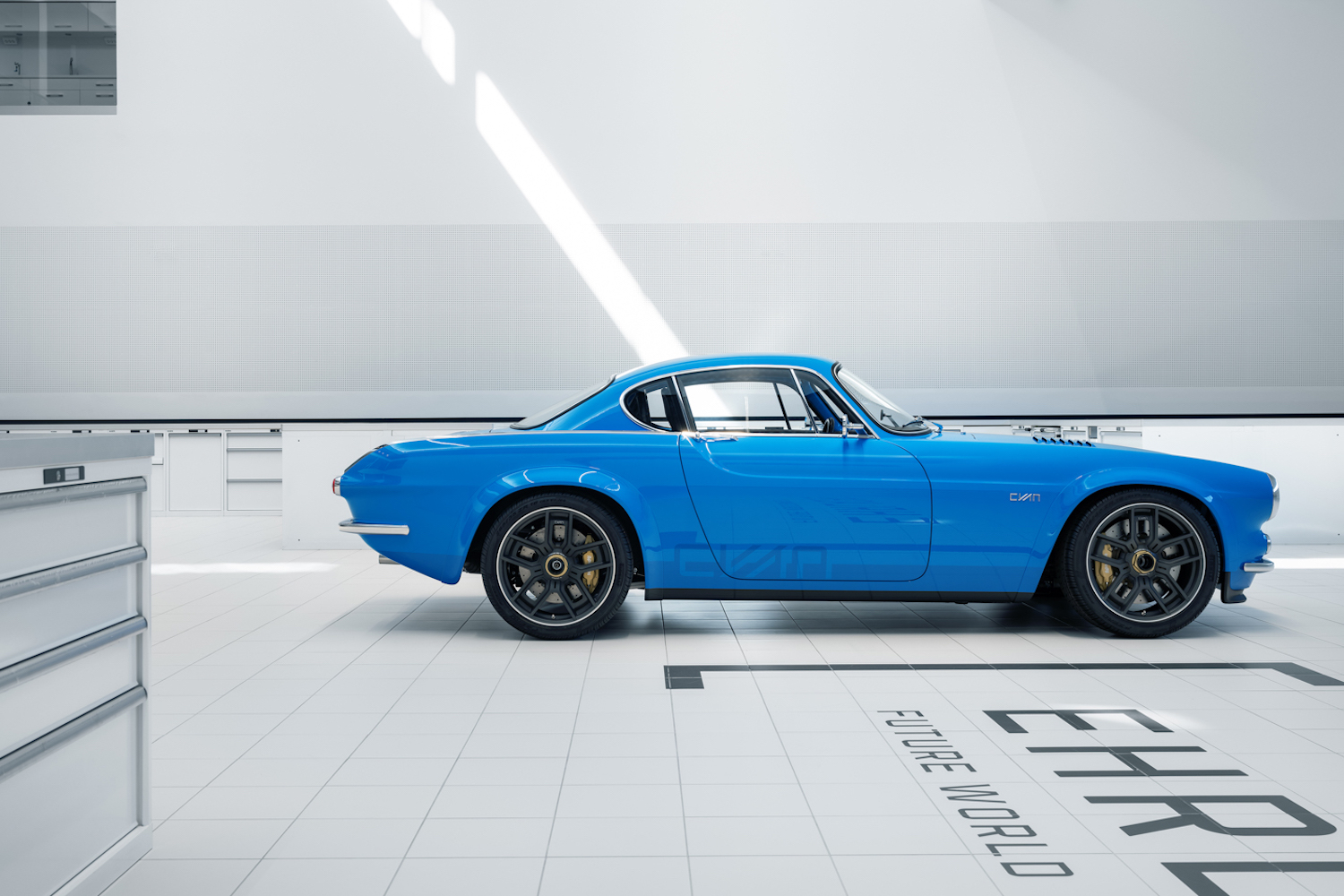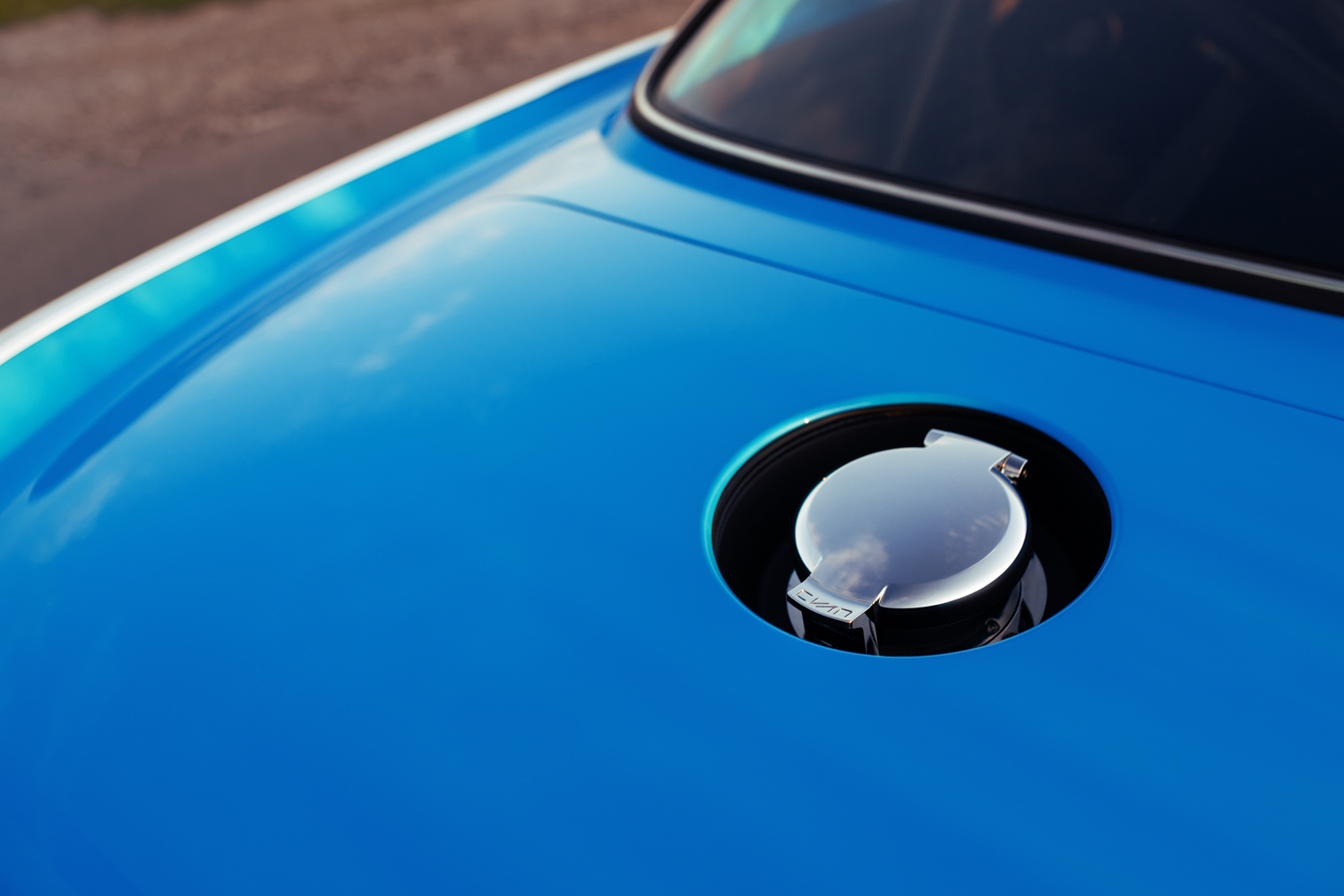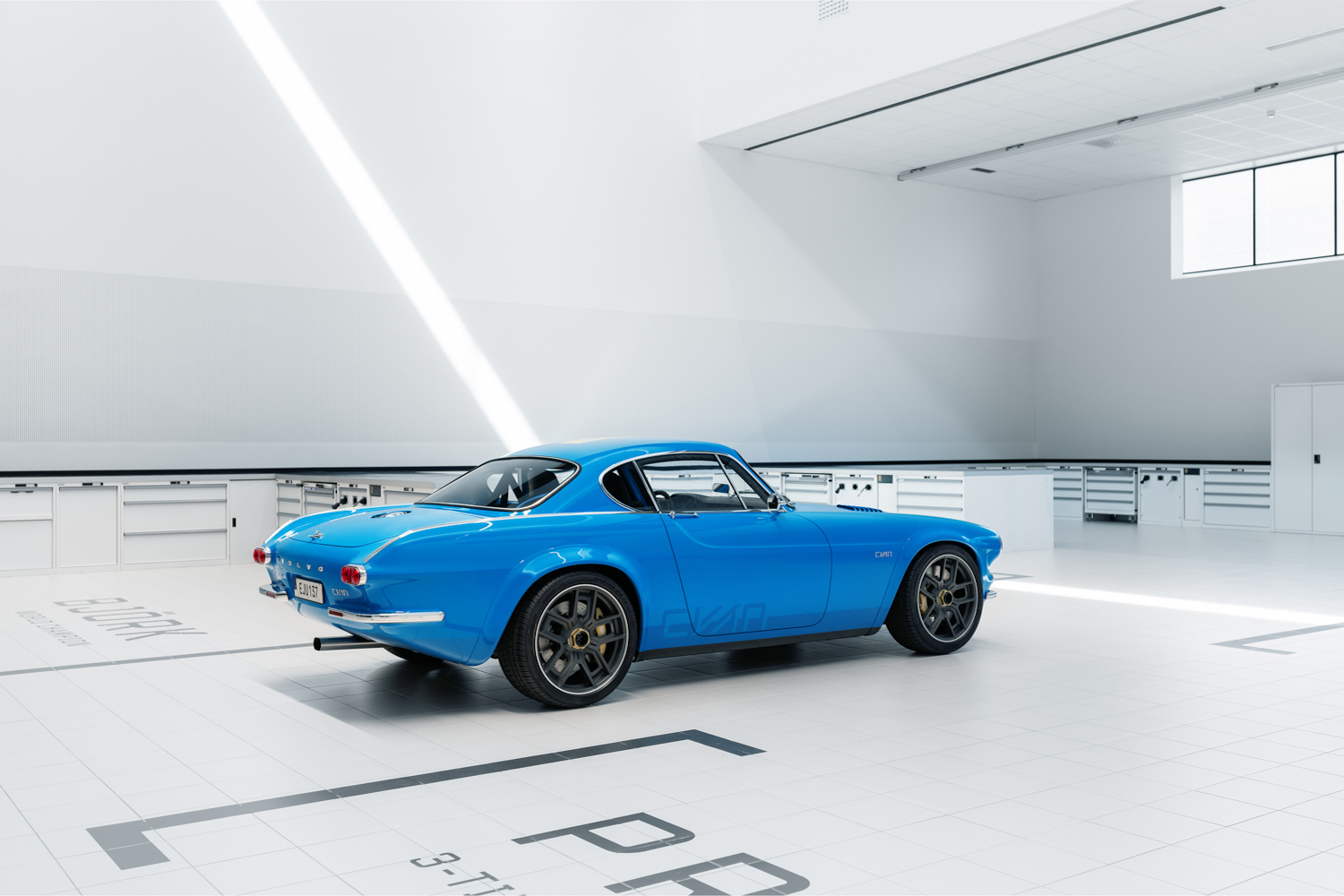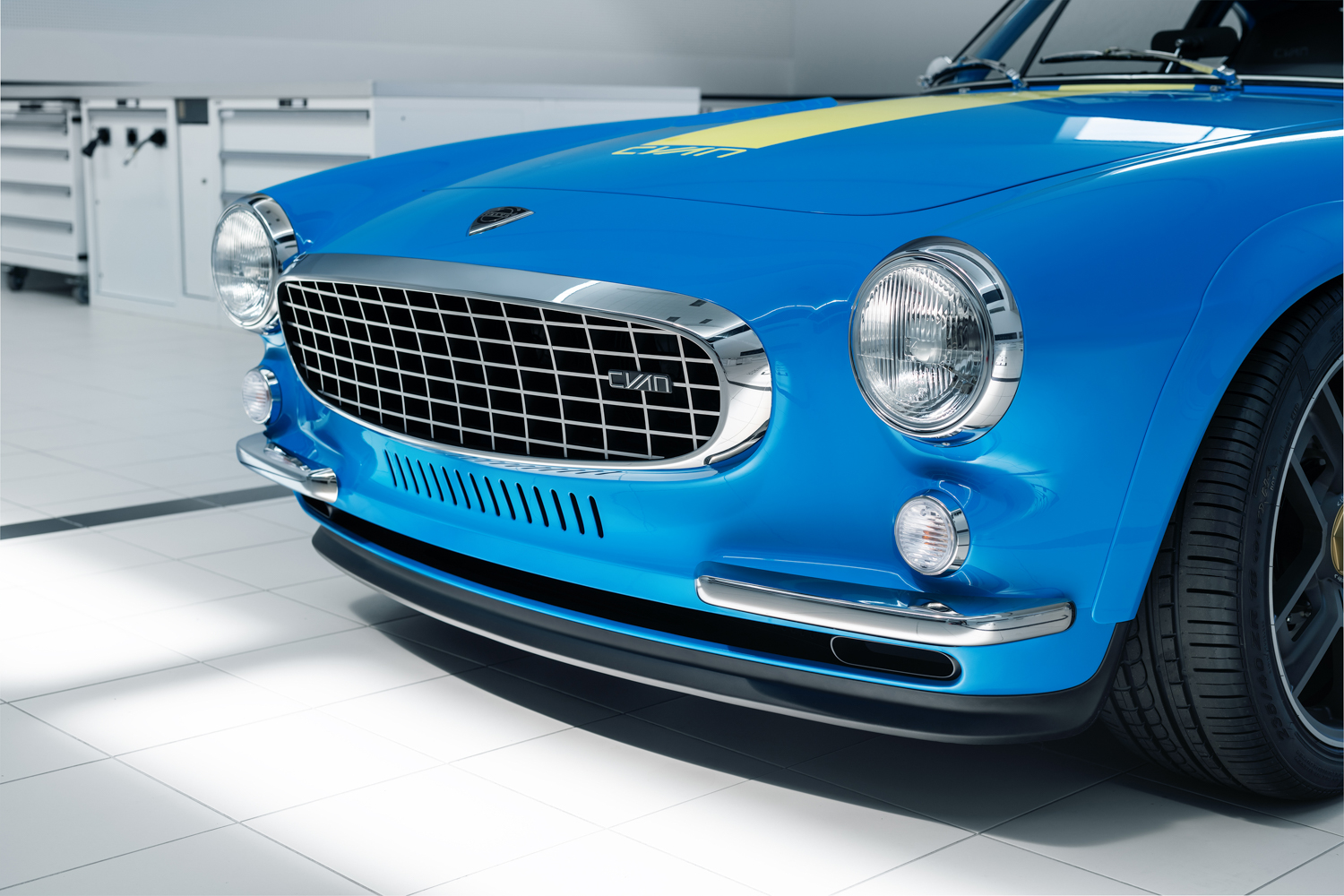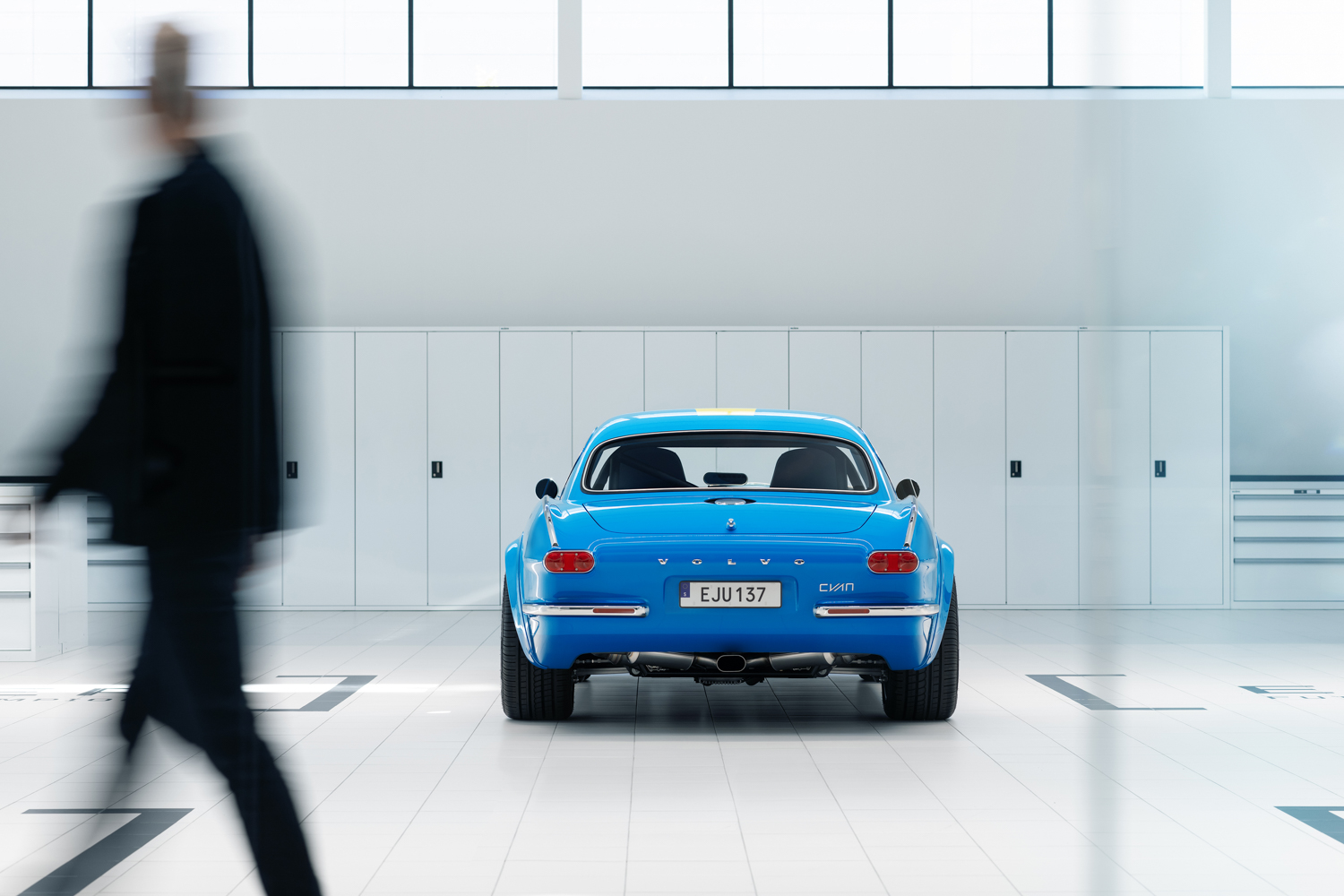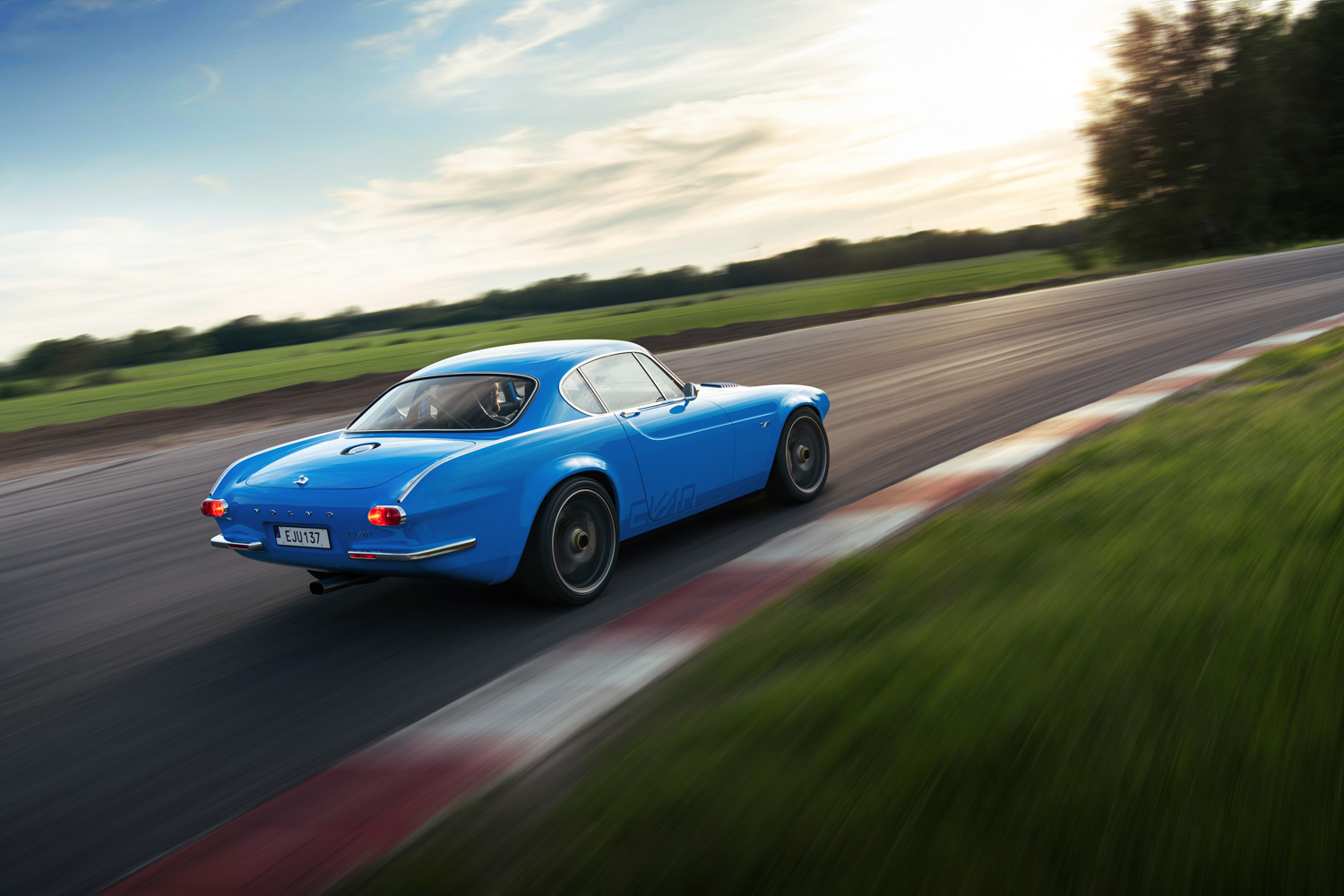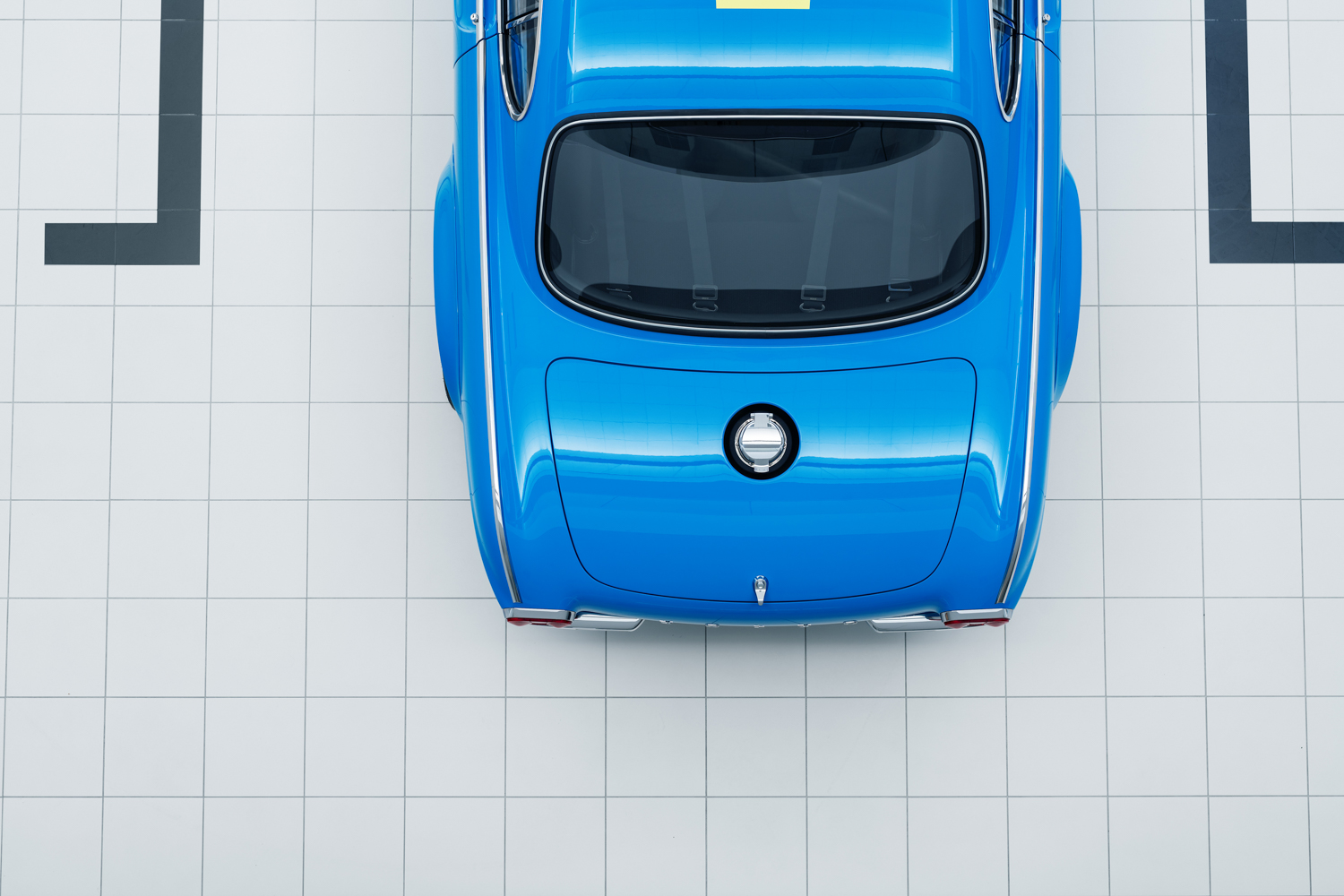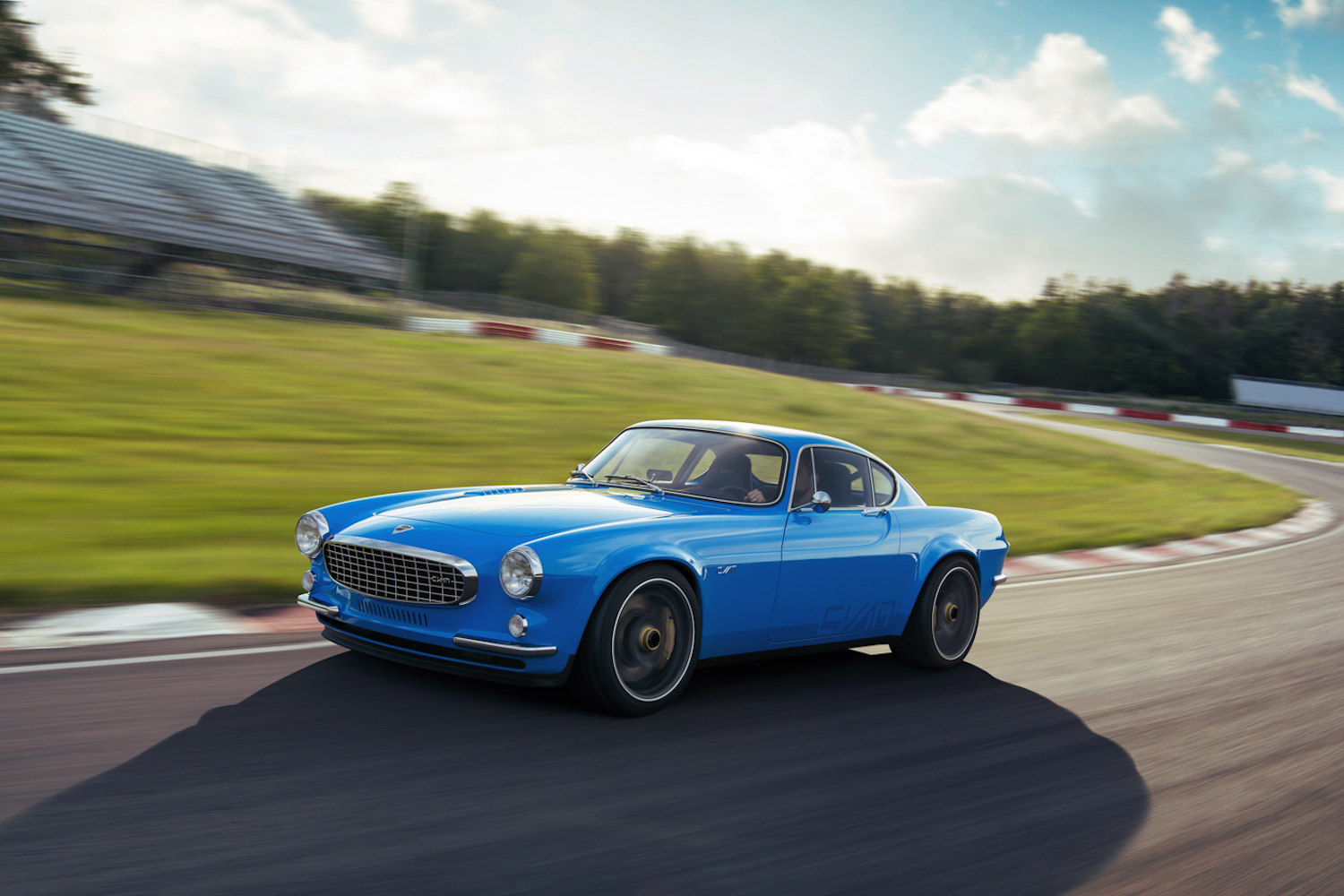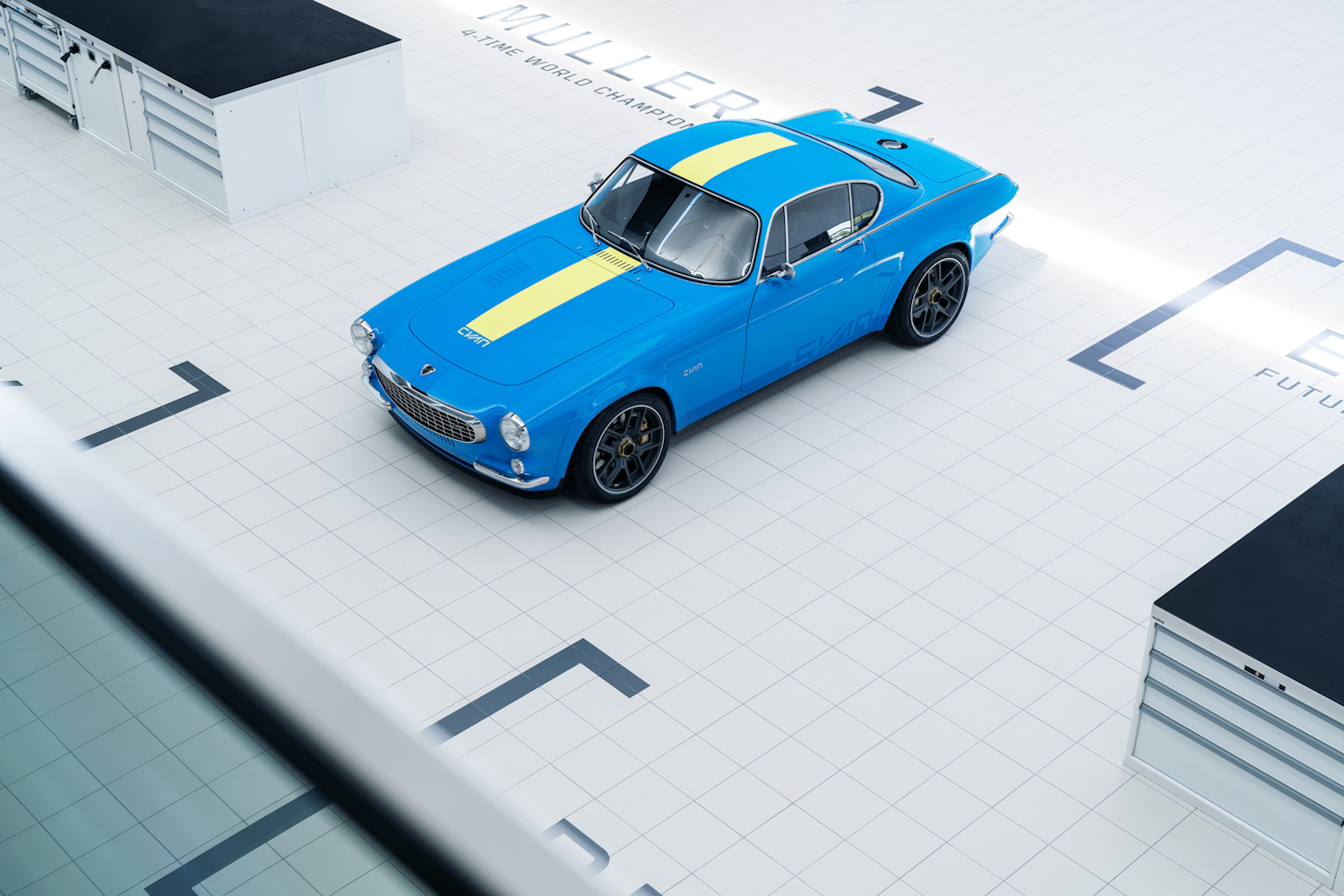Bam! Out of nowhere comes what might just be the coolest car of the year. While Volvo is getting on with the business of becoming fully-electric and faultlessly safe, others within its global organisation have been plotting something with a few more jalapenos up the tail-pipe.
Cyan races Geely and Volvo cars worldwide
Cyan Racing is part of the broader Geely Motors family (the Chinese company that owns Volvo) and is the reigning World Touring Car Championship winning team. Winning races with various Lynk & Co and Volvo models clearly wasn't enough, though, so Cyan decided to go all skunk-works on us and create a new Volvo P1800 Coupe.
Not just any Volvo P1800 Coupe, though. This is not the genteel, relatively slow (but pretty) P1800 as driven by Roger Moore in old episodes of The Saint. This is a modern re-interpretation of the classic shape, imbued with modern mechanicals and race-derived technology.
"Our company was founded in 1996 to race Volvo cars in Sweden and the Volvo P1800 Cyan is closing the circle for us," said Christian Dahl, CEO and founder of Cyan Racing. "We claimed our first world title with Volvo in 2017 and have since then won two further world titles with two other manufacturers. The first world title was a milestone for us, and we felt it was a good time to reconnect with the past and to those before us racing Volvos. The first Volvo P1800 Cyan carries our blue and yellow racing colours to mark our heritage."
Cyan reckons that, with the P1800 having been first introduced in 1960, before the Jaguar E-Type, Ferrari GTO, and Porsche 911, it was about time someone cooked up a 'continuation' model.
"The Jaguar, the Ferrari and the Porsche are all cars with a continuation," said Christian Dahl. "That left us with inspiration to create what could have been if we as a race team had been there during the sixties, racing the P1800, and got to design a road version of our race car. We have done that before with three of our race cars, the Volvo C30, the Volvo S60, when we were known as Polestar, and last year the Lynk & Co 03 Cyan. The Volvo P1800 Cyan is our interpretation of what could have been."
Shunning electric and autonomous tech
While Volvo is pressing hard on the robot-driving button, Cyan went quite the other way with the P1800 recreation. "Obviously we could have built an electric Volvo P1800 filled with all the latest technology, comfort and luxury. But that was not what we wanted," said Christian Dahl. "Amid this paradigm shift we decided to slow down time and freeze a part of it in our own time capsule. To take the best from the golden sixties and combine it with our capabilities of today, keeping a pure yet refined driving experience."
"We decided to apply our expertise in engine, aero and chassis design for a car that delivers on the Cyan engineering philosophy in terms of predictability and intuitive driver control, yet keeping the light-weight, analogue driving experience of the sixties," said Mattias Evensson, Project Manager and Head of Engineering at Cyan Racing. "There are no driver aids to distort the driving experience, meaning no stability control, ABS or brake booster. The Volvo P1800 Cyan is about clearing away anything disturbing the direct connection between driver, tyres and the road. Our objective has been to keep that undisturbed sensation whilst refining it with the best technology of today."
The bodywork has been stretched a little to take wider track suspension and the roof and windows are in a slightly different position to the original. "To put together an interpretation of an iconic design is a challenge. I think we succeeded in merging new technology without losing the character of the original Volvo P1800," said Ola Granlund, Head of Design at Cyan Racing.
"The P1800 Cyan started life as a 1964 Volvo P1800 that has been refined and reinforced utilising high-strength steel and carbon fibre. The basis for a precise and intuitive driving experience is a solid body structure. Cars from the sixties are far from ideal when it comes to this due to weak points and steel quality that allow for flex," said Mattias Evensson. "We have redesigned the structure of the original shape and strengthened weak points in the chassis through triangulation, using high-strength steel and integrated the carbon fibre body with the chassis structure. The carbon fibre is not just a fine shell of separate panels, but rather structural components joined with high-strength adhesive to the steel. All parts of the carbon fibre are adding to the structural rigidity."
The upshot is a body that weighs just 990kg.
420hp from a four-cylinder turbo engine
Power comes from a modern Volvo four-cylinder turbo engine, with 420hp, 455Nm of torque, and a redline set at a heady 7,700rpm.
"While evaluating engines for the Volvo P1800 Cyan, we considered a wide range of Volvo engines, including the original B18, the 'Red Block' B230, the five-cylinder 'White Block', the short inline six-cylinder and the four-cylinder VEA engine that power Volvos of today," said Mattias Evensson. "The efficient and lightweight VEA (Volvo Engine Architecture) gave us the best base, also allowing us to transfer our experience from the different versions of the VEA that we have designed for our race and performance cars of the past decade. It is an engine that provides us with a strong mechanical base and a very efficient combustion system. We have adapted it to suit the Volvo P1800 Cyan with the power output increasing through the entire powerband. The power peaks late. It is designed for high revs a lot, with the torque intuitively linear to the pedal. We have learnt from racing where the drivers want perfect control of the torque, increasing precision and driving pleasure at the same time."
There's a bespoke five-speed gearbox, from specialist supplier Holinger, and Cyan has binned the old live rear axle and put in its own independent rear suspension. There are fully adjustable front and rear suspension features bespoke lightweight components, including aluminium uprights, double wishbones and two-way adjustable dampers with Cyan hydraulics.
"We are really satisfied with the level of grip and precision that we have achieved from the chassis in combination with a responsive steering," said Thed Björk, development driver and 2017 touring car world champion for Cyan Racing. "The car goes where you point it. You can be brutal going into a corner and still find your apex and exit within millimetres. The settings of the car are not aimed at fast lap times but rather to deliver an enjoyable and exciting driving experience. I feel my smile widening each time that I control the drift angle of the car through a long turn."
The carbon fibre-reinforced chassis is connected to the road with 18-inch forged rims with Pirelli P Zero 235/40 tyres at the front and 265/35 at the rear. The car is controlled by 4-piston calipers with 362x32mm steel discs with genuine feeling as no brake booster or ABS is there to interfere.
"The Volvo P1800 Cyan is the result of an advanced engineering process, involving many of the same talents who designed, built and developed our world title winning Volvo S60 TC1 Cyan," said Christian Dahl.
Start saving now, folks...

